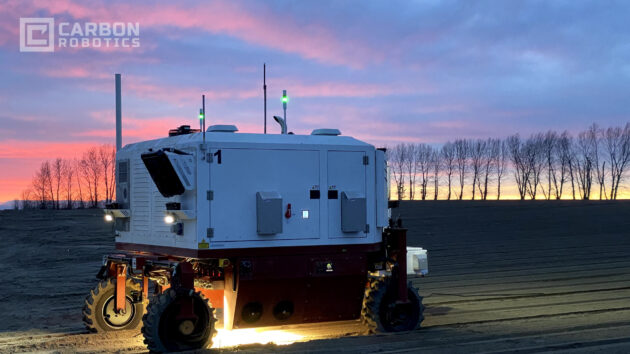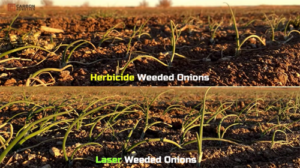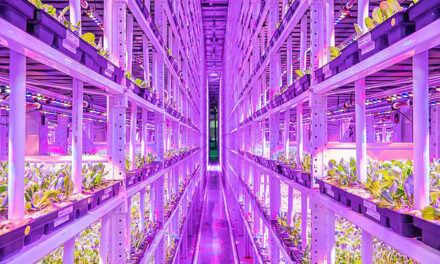A convergence of disruptive technologies is setting the stage for the next evolution in agriculture. State-of-the-art autonomous weeding robots are helping shape a future of sustainable farming. Thanks to advances in autonomous vehicles, robotics, artificial intelligence, and laser technology, autonomous weeders are becoming an economical alternative to the application of harmful chemical herbicides – a practice widely used in today’s crop production. Now organic farming – previously constrained by the high cost of labor-intensive hand-weeding – is on a trajectory to be cost-competitive with conventional farming practices. It’s an evolution that will yield many benefits for the health of humans and for the environment.

Carbon Robotics – a Seattle-based company pioneering the deployment of autonomous weeding robots in agriculture.
What Is An Autonomous Weeder and How Does It Work?
The Carbon Robotics Autonomous Weeder is designed to weed row crops. A single robot will weed 15-20 acres per day, replacing the need for hand-weeding crews and harmful herbicides. Farm robots utilize autonomous technology to safely drive through crop fields, AI to effectively identify plant types, and high-powered thermal lasers to eliminate weeds without disturbing crops or the soil.
In the same way that self-driving cars use sensors and AI to navigate city streets, advanced control systems that interpret sensory information, allow farm robots to navigate fields and eliminate weeds. “AI and deep learning technology are creating efficiencies across a variety of industries, and we’re excited to apply it to agriculture”, said Carbon Robotics CEO and Founder Paul Mikesell.
Laser Weeding Robot
- Fully autonomous machine
- Runs day and night
- Precision, real-time targeting
- Powerful laser destroys weeds
- Certified organic method

Benefits Of Autonomous Laser-Weeding Robots
By deploying autonomous weeder robots, farmers will reduce labor costs, input costs and reliance on harmful herbicides, and simultaneously increase crop yields with the use of regenerative farming practices.
A Reduction In Overall Costs
Automated robots enable farmers to reduce the highly variable cost of manual labor as well as reduce the use of crop inputs such as herbicides and fertilizers. Labor and crop inputs are two of the farmer’s largest expenses. Reducing costs in both these areas is a huge benefit to the farmer’s bottom line.
A Significant Increase In Crop Yield and Quality
Lasers leave the soil microbiology undisturbed, unlike tillage. The lack of herbicides and soil disruption is a regenerative approach to farming, leading to healthy crops and higher yields.

Adoption Of Regenerative Farming Practices
Crops that can be harvested with little to no herbicides, would be a major benefit to both humans and the environment. Traditional chemicals used by farmers, such as herbicides, deteriorate soil health and are tied to health problems in humans and other mammals. A laser-powered, autonomous weed management solution, that can weed approximately 20 acres per day, can solve this problem by reducing or eliminating farmers’ needs for herbicides.
An Economical Path To Organic Farming
One of the largest obstacles to organic farming is cost-effective weed control. Until now, organic farming relied on highly labor-intensive hand-weeding crews. But thanks to autonomous weeder robots, there’s now a solution to weed management that doesn’t require herbicides or the high cost of manual labor. Farmers now have a more realistic, economical path to classifying their crops as organic. A path that one day soon, has the real possibility of making crops from organic farms cost-competitive with crops grown on conventional farms. Autonomous weeder robots are, in essence, leveling the playing field for organic farming.




